Strategy of the Month: Meaningful Communication Opportunities
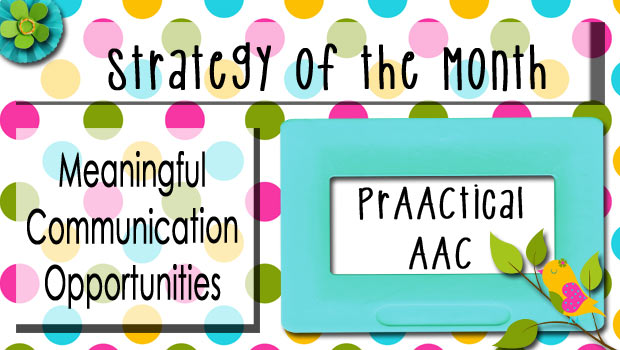
April is springtime where we live and spring is a time of beginnings. It’s fitting, then, that our AAC strategy of the month speaks to the very beginning of AAC intervention. Learning how to create focused opportunities to teach or practice an AAC skill is a pivotal skill for SLPs. The concept is a simple one: create an environment in which the learner WANTS or NEEDS to display the target skill.
–
Communication opportunities are related to the concept of communicative temptations. As SLP blogger Becca Jarzynski of Child Talk puts it “Communication temptations are pretty much just what they sound like: we set up the environment to tempt children to communicate with us.” Stop by and read her excellent post here . While Becca focuses on their use with young children, the approach can be used with people of any age.
–
Tempting people to communicate is all about arranging the environment to make it more likely that the learner will WANT or NEED to communicate with you in order to get his or her agenda met. We can use that to our advantage if we tailor the environmental arrangements to our specific goals and objectives.
–
Working on requesting? Controlled access to preferred items will create the perfect ‘teachable moment.’ Jonah loves Thomas the Train. Too bad that it’s inside a clear container that he can see on the shelf but not reach. I guess he’ll have to use his AAC to ask for it. “Help, please.” “Train.” “I want it.”
–
Maybe you’re targeting commenting. If so, introducing novel, silly, or outrageous items into the environment gives you a chance to work on that. There’s nothing like seeing Robin come into the therapy room with a butterfly pinned to her head to make me smile and see the kid get wide-eyed. “Look!” “What’s that?!” “Uh-oh!” Let the commenting begin!
–
Focusing on using AAC as a means of socially appropriate rejection? A little sabotage will do the trick. Ariel loves finishing the whole alphabet puzzle and has gotten a lot of requesting practice by asking me for the letters she needs. By giving her the wrong piece once in awhile, we can also work on rejection. “No, thanks.” “I don’t want it.” I use aided language input to model it on her AAC device and help her say it that way, too.
–
Trying to elicit longer utterances? Intentionally ‘misunderstanding’ the message may help the learner want to add more information. “Train.” “Yes, Jonah. There’s the train.” “Want train.” “Okay. I’ll get it for you.”
–
Maybe you’re teaching recurrence: Only a tiny sip of juice? Oh, well. I guess Mariah will have to use her AAC to ask for ‘more.’ And it works. Not because I want her to ask for more, but because she wants to. It’s a powerful strategy, but one we have to be careful not to over-use.
–
The core of this strategy is shaping the experience so that the learner has to communicate using the target skill in order to get his or her needs met. It’s about enticing someone to express themselves. It’s about mutual cooperation, not compliance.
–
Some learners will communicate just because you told them to. Terrence is a great example of a learner like this. He’s a high school student recovering from brain injury and is about as motivated as you can get. Terrence is so eager to learn his new SGD and is such a social fellow that he’ll do what we ask without any special enticement. We could easily get some flashcards or set up a boring activity to help him learn where the vocabulary is stored on his device. He’s so motivated that he’d be happy to comply. Still, creating a situation in which he needs to use the target skill is something we aim for in most sessions. Why? Because it helps with generalization. If we teach him the new word/phrase under conditions in which he really wants or needs to say that thing, then he is more likely to be able to use it for that purpose outside the therapeutic context. Building internal incentive to say something allows us to teach him not just what to say using his AAC, but gives him practice in doing that when he needs to.
–
For Terrence, it’s a two-fer: New word + its practical application = increased likelihood of carryover. And that’s a good thing, right?
–
For other kinds of learners, being skillful at creating meaningful communication opportunities is even more important. A preschooler with ASD or a young adult with significant intellectual disabilities isn’t going to use the target skill just because that’s what you want. THEY have to want or need to use the new skill. We’re pretty blunt with our student clinicians: If you can’t create a situation in which the learner wants to communicate using the target skill, chances are that what you’re doing isn’t therapy.
–
For our April Strategy of the Month, we invite you to connect with your inner temptress. Join us as we have some fun building opportunities for our learners to use their target AAC skills because they want to. Feel free to share your fun, imaginative ideas for creating communication opportunities. The more outrageous, the better. Let the tempting begin!
–
Filed under: Strategy of the Month
Tagged With: implementation ideas, intervention
This post was written by Carole Zangari

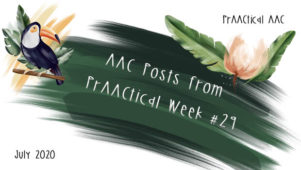
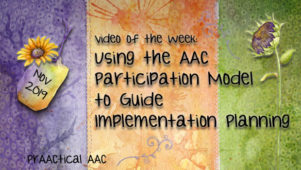
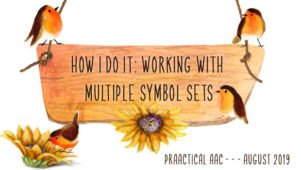
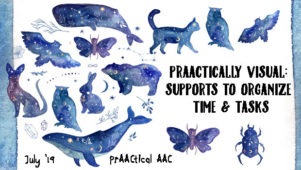
1 Comment